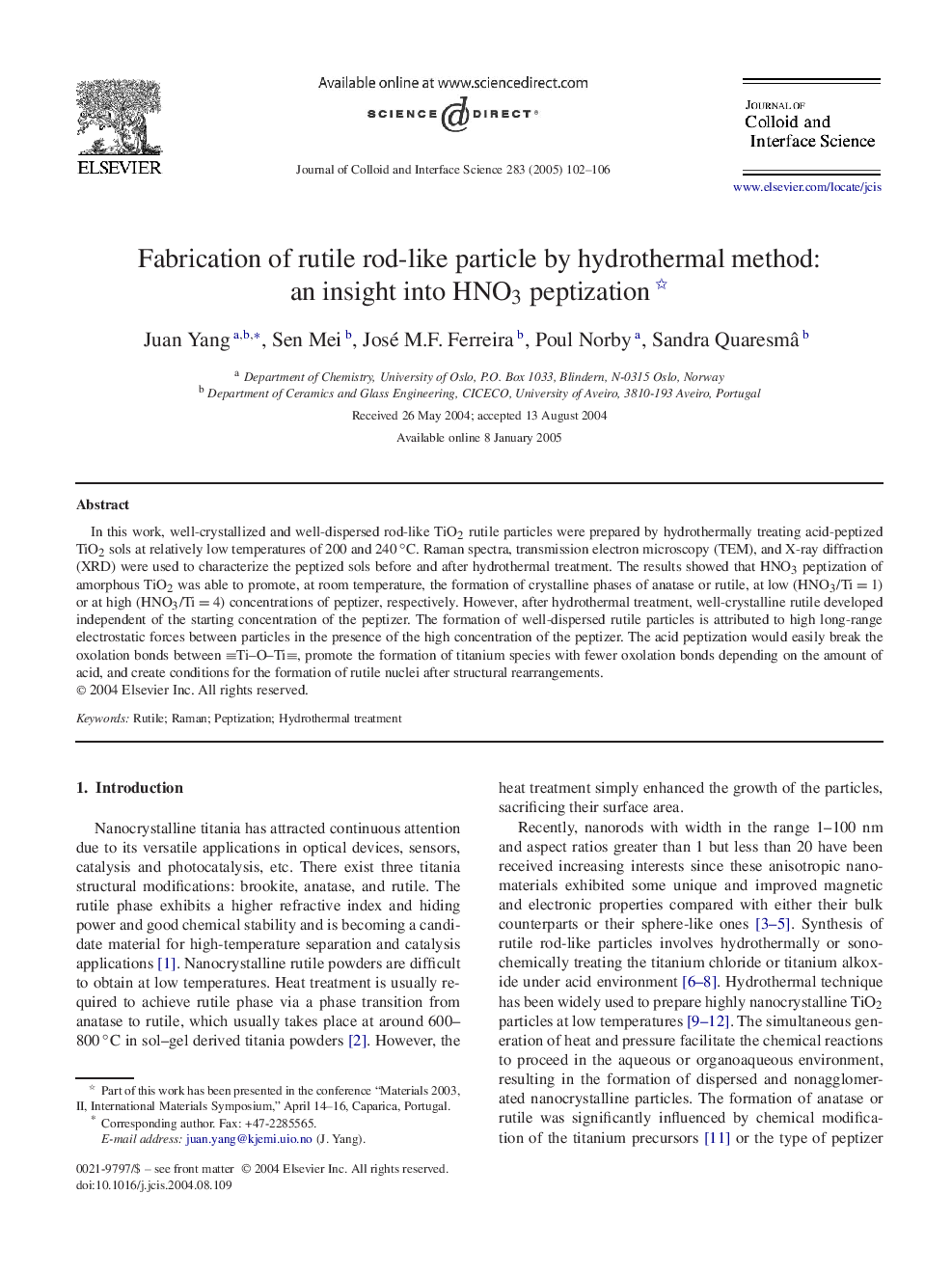| Article ID | Journal | Published Year | Pages | File Type |
|---|---|---|---|---|
| 10378458 | Journal of Colloid and Interface Science | 2005 | 5 Pages |
Abstract
In this work, well-crystallized and well-dispersed rod-like TiO2 rutile particles were prepared by hydrothermally treating acid-peptized TiO2 sols at relatively low temperatures of 200 and 240â°C. Raman spectra, transmission electron microscopy (TEM), and X-ray diffraction (XRD) were used to characterize the peptized sols before and after hydrothermal treatment. The results showed that HNO3 peptization of amorphous TiO2 was able to promote, at room temperature, the formation of crystalline phases of anatase or rutile, at low (HNO3/Ti=1) or at high (HNO3/Ti=4) concentrations of peptizer, respectively. However, after hydrothermal treatment, well-crystalline rutile developed independent of the starting concentration of the peptizer. The formation of well-dispersed rutile particles is attributed to high long-range electrostatic forces between particles in the presence of the high concentration of the peptizer. The acid peptization would easily break the oxolation bonds between TiOTi, promote the formation of titanium species with fewer oxolation bonds depending on the amount of acid, and create conditions for the formation of rutile nuclei after structural rearrangements.
Related Topics
Physical Sciences and Engineering
Chemical Engineering
Colloid and Surface Chemistry
Authors
Juan Yang, Sen Mei, José M.F. Ferreira, Poul Norby, Sandra Quaresmâ,
